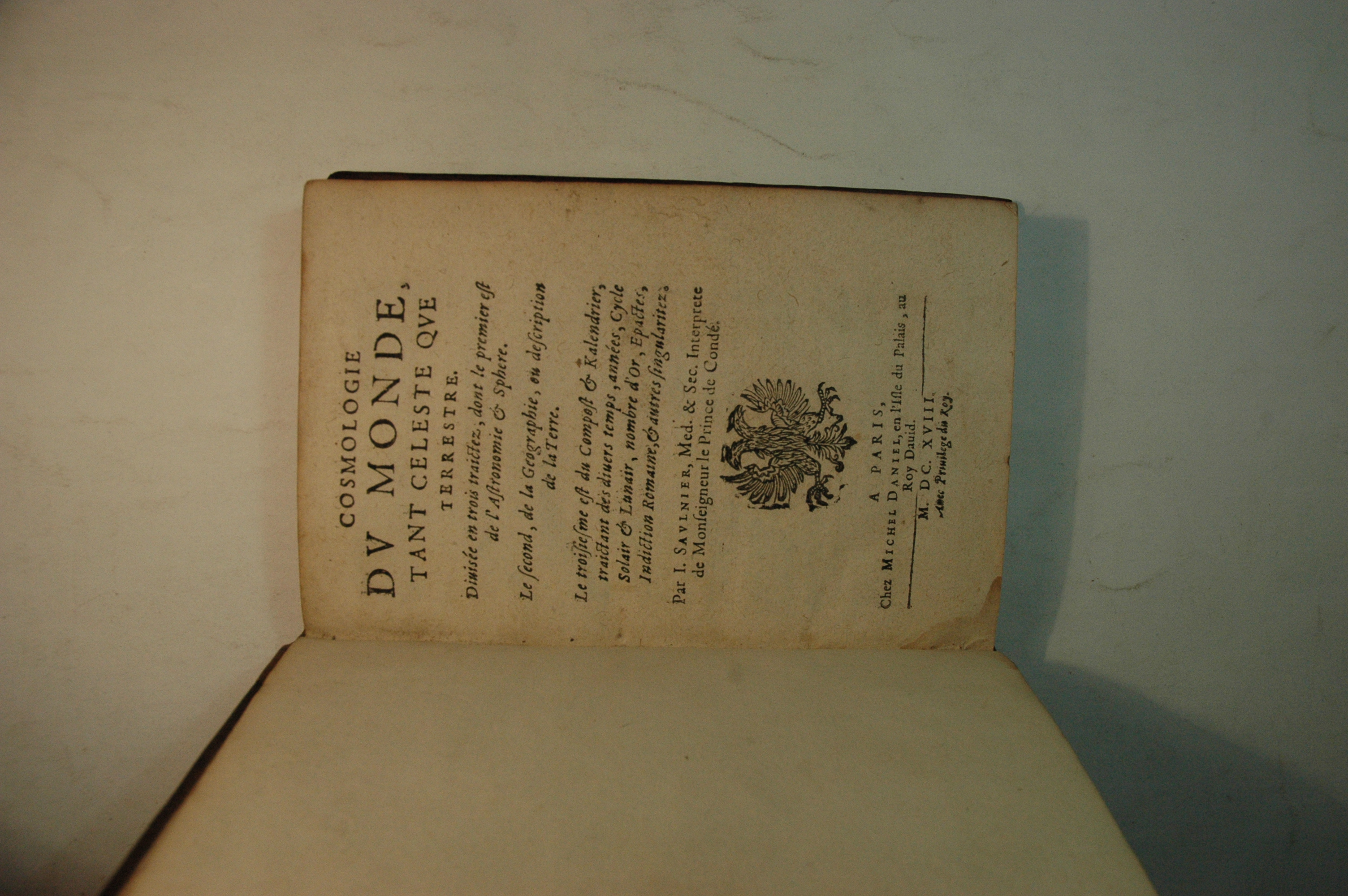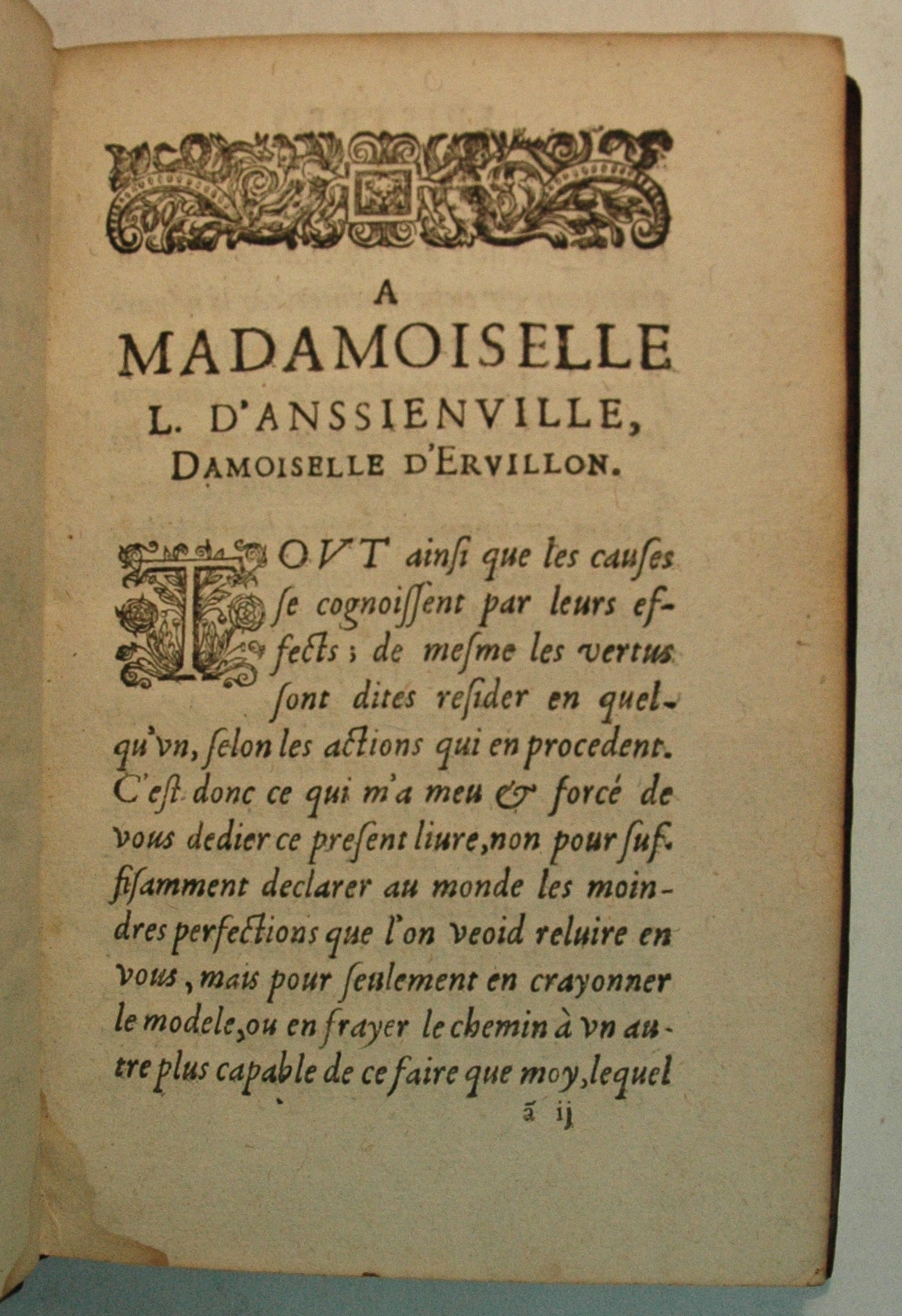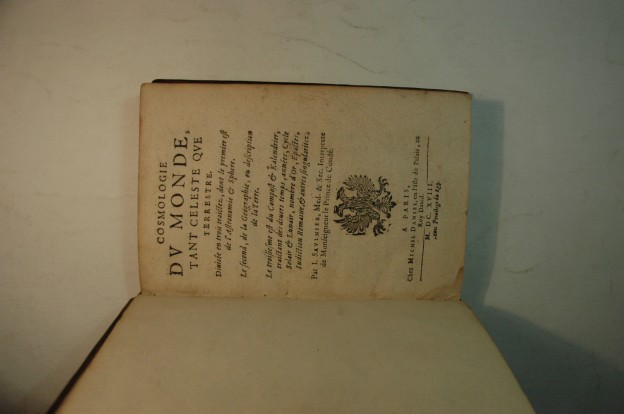SAULNIER, Jean
Cosmologie du Monde, tant celeste que Terrestre
Paris, Michel Daniel, 1618£1,950.00
FIRST EDITION. pp. [viii], 236, [xii]. Roman letter. small woodcut printer’s device on t-p repeated in a larger format on recto of last, charming historiated woodcut initials, woodcut and typographical headpieces, fldg. engraved plate of a globe, eighteenth century printed bookseller’s label from Rouen on pastedown. Light age yellowing, minor waterstain to lower blank margin in places. A very good, clean copy, in slightly later French speckled calf, large crowned monogram gilt at centers of covers, spine with raised bands richly gilt in compartments, expertly remounted, corners restored, all edges speckled red.
Rare first and only edition of this curious astrological work which Saulnier describes in his prefatory epistle, his dedication to Mademoiselle Louise d’Anssienville, as an epitome in imitation of Livy and Valerius Maximus. The work is a description of the globe and heavens so as to better understand divination, in other words a description for the purposes of astrology in the guise of a cosmology. “Nous commencerons par le traicté de la Sphere, comme estant la plus necessaire, pour en apres entendre mieux le peu que nous dirons de ce qu’avons promis” The work is divided into three chapters, the first and longest, entitled ‘Traicte de L’Astrologie Naturelle’ starts with a description of the size of the heavens and then describes the major constellations and the origins of their denomination. He then describes the “Cercles de la shpere” concentrating on the Zodiac and follows with a “Theorie des Planettes” and a description of the nature of the zodiac and planets. The second chapter is a description of the earth (including a list of the principal provinces of the New World) and its four elements fire, water, air and the earth. There is an interesting section on tides and the effects the moon has on the earth and a description of each of the parts of the world and its oceans. He also includes a section on the rising and falling of astrological signs. The last and most curious chapter is a description of ‘Time and the Calendar’, and the division of time into days months and years. He finishes with a series of predictions for the weather for each year from 1619 to 1643 based on his description of the solar cycle, and gives a table of the calendar from which he makes these predictions. We have been unable to discover the owner of the monogram on both covers. A very good copy of this most interesting and rare work.
BM STC Fr. C17 S307. Caillet 9916. Houzeau-Lancaster 5080, Cantamessa II 4051. Alden 618/111.In stock







